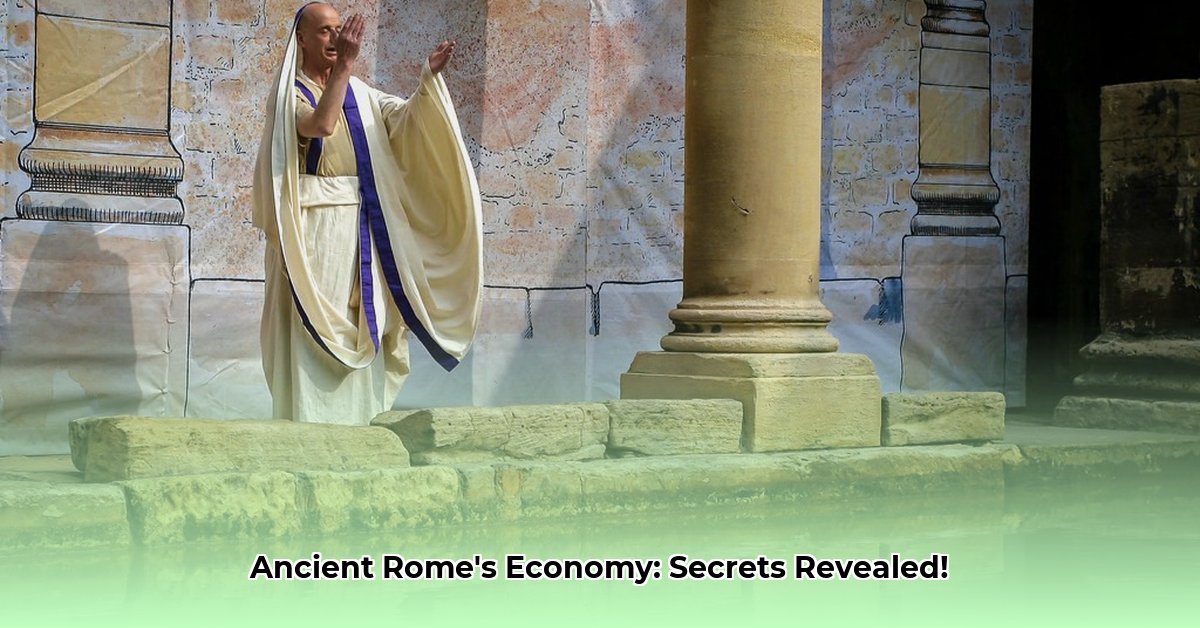Ever wondered what it was like to handle cash in ancient Rome? Forget ATMs and credit cards – we’re delving into the story of bronze, silver, and gold coins that powered a colossal empire for over six centuries. This journey reveals more than just metal; it unveils a saga of authority, image crafting, and, ultimately, the financial well-being of a mighty realm. We’ll explore how these early monetary forms evolved into a sophisticated system, how altering the precious metal content within coins impacted the entire economy, and how emperors shrewdly leveraged coinage as a dynamic tool for propaganda. So, let’s travel back in time to discover how understanding money in ancient Rome can even offer profound insights into today’s economic ebbs and flows. Learn more about ancient Rome’s currency to explore this fascinating history.
The Foundations and Evolution of Roman Currency
The narrative of money in ancient Rome is far more than just the simple exchange of goods; it’s a compelling account of power, public image, and the economic lifeblood of a sprawling state. In its nascent stages, Roman society often resorted to bartering, frequently employing hefty, un-coined chunks of bronze known as aes rude (raw bronze) for transactions. This rudimentary stage eventually gave way to more structured forms of currency.
Inspired by the established monetary systems of the Greeks and other Italian cities, Rome gradually developed its own distinct financial apparatus. This evolution was not a sudden shift but a complex process, marked by the introduction of several key forms of currency.
Early Monetary Beginnings: From Aes Rude to Aes Grave
Around the 4th century BC, Rome began to move beyond aes rude. The Roman state first issued aes signatum, large, rectangular bronze ingots, weighing around 1.5 to 1.6 kilograms. These “signed bronze” pieces were unique for their leaded tin bronze composition and distinct markings. Alongside these ingots, Rome also adopted aes grave, substantial cast bronze coins, around 300 BC. Unlike later struck coins, these were poured into clay molds, ensuring a precise weight and form. The basic unit, the As, initially weighed a Roman pound (approximately 324 grams) and was subdivided into fractions like the semis (half) and quadrans (quarter). These early systems, though not initially part of a unified plan, laid the groundwork for a more formalized economy.
The Denarius: Backbone of the Roman Economy
A pivotal transformation occurred around 211 BC with the introduction of the denarius. This small silver coin, weighing approximately 4.5 grams, quickly became the primary silver currency and the bedrock of the Roman economy for centuries. Its name, derived from “deni” (meaning ‘containing ten’), reflected its initial value of ten asses. The denarius underpinned vast trade networks, military expenditures, and daily transactions across the Republic and later, the Empire. Complementing the denarius were the quinarius (valued at five asses) and the sestertius (worth two and a half asses), though the latter would evolve into a substantial bronze or orichalcum coin in the Imperial period.
Have you ever considered the surprising origin of the word “money” itself? Its roots can be traced directly to the temple of Juno Moneta in Rome. The very act of minting coins in close proximity to this revered site underscores the intimate connection between currency and the state’s authority—a clear sign of how deeply intertwined Roman governance and its financial affairs truly were. This long-standing stability, however, would eventually face significant challenges.
Imperial Propaganda on Coinage: The Emperor’s Image in Every Hand
Roman leaders were remarkably astute in their understanding of communication. They quickly grasped that money in ancient Rome transcended its function as mere transactional currency. It transformed into a potent medium for disseminating information and ideas across the empire’s immense territory. During the Imperial period, emperors, starting notably with figures like Julius Caesar and Augustus, began to imprint their visages onto coins. This act fundamentally converted these pieces of metal into powerful instruments of propaganda. Picture it as the ancient world’s most pervasive form of social media: leaders could project their personas, their triumphs, and their desired narratives directly into the hands of the common populace, from bustling city markets to distant military outposts. The very images stamped onto these circulation coins, as the philosopher Epictetus observed, implicitly reflected how people perceived and felt about their rulers, influencing public opinion with every transaction.
How Emperors Put Portraits on Coins Step-By-Step
Roman coinage offers a captivating and tangible portal into the empire’s core values and the calculated strategies employed by its most influential leaders. Coins were never merely utilitarian currency; they were meticulously crafted messages designed to resonate deeply throughout society. But the question remains: how did emperors put portraits on coins step-by-step to ensure their image was the one consistently seen and recognized by all? Let’s break down this intricate process.
Key Takeaways:
- Roman emperors strategically utilized coin portraits as a powerful means to project their authority and establish legitimacy across the empire.
- Portraiture styles on coins intentionally alternated between verism (striking realism) and classicism (idealized representation) to convey specific messages and imperial narratives.
- Coinage served as the primary and most pervasive medium for disseminating imperial images and propaganda throughout the vast Roman Empire.
- The tresviri monetales (three men of the mint) were specifically responsible for overseeing the designs of each coin, often incorporating mythical histories to bolster the Republic’s prestige.
- Stylized portraiture of Roman emperors evolved significantly, developing into remarkably lifelike depictions that commanded respect and symbolized power within Rome.
- Coinage designs consistently mirrored significant shifts in the political landscape and prevailing cultural values of the time.
- Numismatists (coin specialists) and historians meticulously study these portrait styles to gain profound insights into Roman history and the nuances of imperial messaging.
The creation of an imperial coin portrait was far from a simple endeavor. It demanded the expertise of highly skilled artisans, careful consideration of political implications, and a distinct element of propaganda.
- Metal Selection & Preparation: The process commenced with the careful selection of the appropriate metal—typically bronze, silver, or gold—determined by the coin’s intended value and denomination. This raw metal then underwent rigorous smelting (melting down) and refining processes to achieve the necessary purity and consistency.
- Creating the Dies: This was arguably the most critical stage, involving the meticulous crafting of two specialized dies (stamps). One die was designed for the obverse (the front side), which would bear the emperor’s portrait. The other die was for the reverse (the back side), often featuring a symbolic image, a deity, or a specific imperial message. These dies were painstakingly engraved by master artisans, acting as the coin’s precise printing plates. The tresviri monetales, a board of three senatorial magistrates, held significant influence over these designs, especially during the Republic.
- Imperial Approval: The ultimate design of these dies was never arbitrary. It had to be explicitly aligned with the emperor’s desired public image and the specific political or social message he wished to convey. Consequently, imperial approval was an absolutely crucial and non-negotiable checkpoint before minting could commence. This allowed emperors like Julius Caesar to defy tradition by featuring his own living portrait, a revolutionary act that was later adopted by emperors like Augustus to project his “ageless” image.
- Striking the Coins: With the dies prepared and approved, the actual minting process began. A precisely prepared metal blank (often a small, pre-weighed pellet of metal) was carefully positioned between the two dies. The lower die was firmly set into an anvil for stability. The upper die, held securely by tongs, was then struck with immense force by a heavy hammer. This powerful impact imprinted the intricate designs from both dies onto the metal blank, thus creating the finished coin.
- Quality Control: As a final essential step, each newly struck coin underwent a rigorous inspection for quality. Any coins deemed imperfect—perhaps due to an unclear strike, a flaw in the metal, or misaligned images—were rejected. Only those meeting the stringent quality standards were deemed fit for circulation, ensuring the emperor’s message was clearly legible. These Roman mints were widespread, even used to announce new emperors, as seen with usurpers like Quietus who issued coins despite a short reign.
Verism vs. Classicism: Two Sides of the Same Coin
Emperors consistently faced strategic choices regarding the artistic style of their portrayal on coinage. Should they opt for a depiction that emphasized wisdom and experience (verism), or one that conveyed eternal youthfulness and a godlike presence (classicism)?
- Verism: Imagine a coin displaying an emperor with realistic wrinkles, a stern expression, and perhaps visible signs of age. This style, common during the late Republic and early Empire, was intended to project maturity, profound wisdom, and a deep, rooted connection to traditional Roman values and ancestral heritage. Emperors like Vespasian often chose veristic portraits to project solidity and pragmatism.
- Classicism: Conversely, coinage portraying an emperor with a smooth, unblemished face, idealized features, and a clear resemblance to Greek gods or heroes exemplified classicism. This approach aimed to project youth, robust strength, and undeniable divine favor, often associating the emperor with mythical grandeur. Augustus, for example, consistently used idealized portraits to portray himself as perpetually youthful and divinely favored. Commodus even went to the extreme of depicting himself as Hercules in AD 192.
The choice between these styles was never a matter of mere vanity. Emperors meticulously weighed the political implications and desired public perception associated with each artistic approach. What specific message did they intend to send to the diverse populace of their vast empire, and which qualities did they seek to emphasize as pillars of their rule?
Economic Instability: The Dangers of Debasement
Yet, the Roman monetary system was far from flawless, and its vulnerabilities eventually surfaced. One of the most significant pitfalls involved the practice of debasement—the deliberate reduction of the precious metal content within coins, particularly the denarius. This insidious trend, believed to have gained traction under Emperor Nero in 64 AD (when silver content dropped from 4g to 3.8g), continued with subsequent rulers, often driven by the escalating costs of military campaigns and an ever-expanding government bureaucracy. Imagine gradually diluting your favorite concentrated beverage; eventually, it loses its essential flavor and potency. Similarly, this relentless debasement systematically chipped away at public trust in the currency and significantly contributed to the empire’s economic decline, leading to widespread inflation and financial turmoil.
How Did Debasement Affect Trade?
Have you ever considered the profound repercussions when a government begins to tamper with its national currency? Let’s journey back to ancient Rome and meticulously examine how the manipulation of their coinage, specifically the denarius, reverberated throughout its expansive trade network.
Key Takeaways:
- Roman emperors consistently devalued their currency, especially the denarius (a silver coin) and later the antoninianus, to finance state expenditures.
- This debasement directly led to rampant inflation, eroded public confidence, and generated widespread economic instability across the imperial territories.
- While offering temporary financial relief, currency debasement imposed severe, far-reaching consequences on the Roman economy.
- The practice was closely tied to increasing military spending and ambitious public works projects, particularly during times of war like the Second Punic War or the Crisis of the Third Century.
- As the silver content of coins diminished, their actual value plummeted, resulting in significant increases in prices for goods and services, leading to a fall in real wages.
Consider the Roman denarius as the quintessential currency of its era, the foundational coin that lubricated the sprawling machinery of commerce. Now, imagine a scenario where authorities subtly begin to shave off small quantities of silver from each coin being minted. This, in essence, is the perilous path Roman emperors embarked upon. They systematically reduced the precious metal content not out of malice, but to produce more coins to cover ever-growing state expenses, often related to military campaigns. Septimius Severus, for example, reduced the denarius’s silver content to 50%, and by the mid-3rd century, it was down to 5%. The antoninianus, introduced by Caracalla as a “double denarius,” also quickly succumbed to debasement, never containing more than 1.6 times the silver of a denarius, despite its nominal value. What could possibly go wrong with such a seemingly clever, yet fiscally irresponsible, maneuver?
The immediate and most palpable consequence of this debasement was widespread inflation. A coin containing less silver inherently possessed less intrinsic value. This devaluation directly translated into substantially higher prices for virtually all goods and services, from essential foodstuffs like grain to the costs associated with gladiatorial games. So, how did debasement affect trade? Roman merchants required increasingly larger quantities of debased denarii (or later antoniniani) to conduct the very same transactions, drastically altering the economic landscape. This dramatic shift in purchasing power created significant challenges for everyday citizens and large-scale traders alike. The salary of a Roman soldier, for instance, increased from 900 sestertii a year under Augustus to 2,000 sestertii under Septimius Severus, yet the price of grain more than tripled, indicating a severe fall in real wages.
As emperors progressively debased the currency, public confidence in its stability and value began to erode precipitously. Why would anyone willingly accept a coin if they knew its true metallic worth was significantly less than its face value? This profound erosion of trust triggered several detrimental ripple effects across the empire:
- Trade Slowdown: Merchants, both within and outside the empire, grew increasingly wary of accepting Roman coins, often preferring to engage in direct barter or to demand more stable currencies from external regions. This hesitancy curtailed the volume and speed of commercial activities. The collapse of the Roman banking system under Gallienus (260-268 AD) when banks rejected debased copper flakes is a stark example.
- Regional Fragmentation: With the central currency losing its credibility, local economies increasingly reverted to barter systems or relied on older, more reliable coins that predated widespread debasement. This fragmented the interconnected economic flow that had previously bound the vast Roman Empire together.
- Military Weakness: Soldiers, whose wages were paid in debased coinage, discovered their earnings purchasing less and less, leading to pervasive discontent, increased instances of mutiny (as seen in the rebellion of mint workers under Aurelian), and, consequently, a less effective and reliable fighting force crucial for maintaining imperial control. This inflation played a significant role in the Imperial Crisis of 235-284 AD, where over 20 emperors rose and fell.
The Roman authorities attempted reforms, such as Aurelian’s in 274 AD, which tried to standardize the antoninianus at a ratio of 20 parts copper to 1 part silver (marked XXI or KA). However, debasement continued. Diocletian’s monetary reform in 295 AD introduced new denominations like the argenteus (a new silver coin struck at the old Neronian standard) and a new large bronze coin with 2% silver. He also issued the Edict on Maximum Prices in 301 AD, an attempt to control inflation, but it proved futile due to market forces and the continued devaluation of the underlying currency.
Rome’s Advanced Banking System and Other Payment Methods
Beyond physical coins, Roman society also developed a surprisingly advanced financial infrastructure, including a robust banking system and other methods of payment. This sophistication enabled larger transactions and facilitated extensive international trade.
Roman banks, known as argentarii or mensarii, were prevalent throughout the empire, with some even establishing branches in different cities. While most transactions were conducted in person, the system facilitated the movement of money across vast distances. These banks offered a variety of services, including deposits, withdrawals, and loans, acting as crucial financial intermediaries for individuals and businesses alike. They accepted both coins and lucomones, which were certificates of debt, functioning much like early forms of paper money. Additionally, sextarii, small bronze ingots, were used for specific exchanges.
The banking system was highly regulated, with rules against lending to individuals for speculative purchases or those with poor credit. This regulatory framework contributed to a degree of financial security and trust within the Roman economy, enabling the financing of monumental projects like military campaigns and vast public works.
Enduring Legacy of Roman Currency
Despite its inherent challenges, money in ancient Rome left an indelible mark on global financial history. The denarius, for instance, directly influenced the development of later currencies. Its name survives today in the Arabic dinar, used in countries like Tunisia and Jordan, and in the word for “money” in several Iberian Romance languages like Spanish dinero and Portuguese dinheiro. The British pound even traces its name back to the Roman libra, a unit of weight. This demonstrates the extensive reach of Roman influence, extending far beyond its geographical borders. The establishment of a standardized currency, rigorously backed by a centralized power, laid fundamental groundwork for modern monetary systems. By studying Roman currency, we gain crucial insights into the complex interplay between economic policy, the exercise of political power, and the maintenance of societal stability—lessons that remain remarkably pertinent in our contemporary economic landscape.
New Discoveries and Ongoing Studies
The field of Roman numismatics (the study of coins) continues to yield exciting revelations. A significant 2023 discovery of a substantial cache of at least 30,000 astonishingly well-preserved Roman bronze coins off the coast of Sardinia serves as a powerful reminder of the enduring importance of such finds. Only four were damaged, with legible inscriptions, offering invaluable data. These archaeological treasures furnish invaluable data for deciphering ancient trade routes, understanding specific economic environments, and mapping the intricate movement of money in ancient Rome. Finds like the Gallic Laelianus coin in Cambridge, dated to AD 269, offer rare insights into short-lived emperors and the political turmoil of the Crisis of the Third Century, demonstrating how coins serve as vital historical records.
So, the next time you encounter an image of a Roman coin, remember that it’s far more than a mere artifact; it’s a tangible portal into a vibrant historical reality—a snapshot of emperors, legions, and the pulsating monetary rhythm of an empire.










